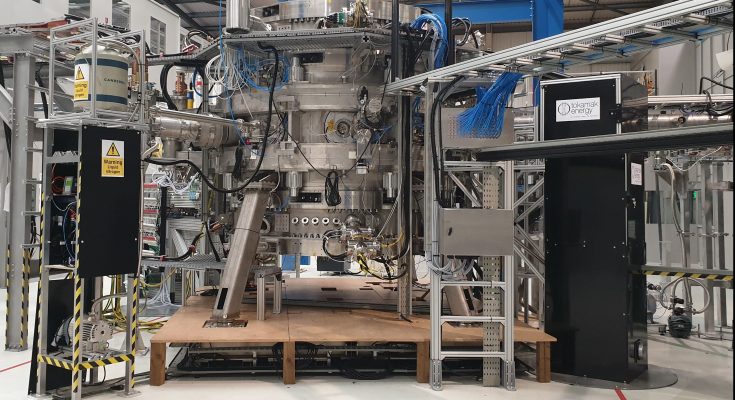
To hasten the commercialization of nuclear fusion power, the UK’s Atomic Energy Authority has partnered with the United States’ Common Fusion Systems (CFS).
They have agreed to work jointly on fuel cycle technologies, systems integration models, and advanced manufacturing over the course of the next five years.
The worldwide community is racing to bring fusion power to market. The state-funded UKAEA is responsible for supervising fusion experiments at the JET facility in Oxfordshire, and is charged with ensuring the United Kingdom maintains its position as a global leader in the field. Earlier this year, the United Kingdom announced the shortlist of five locations for a demonstration plant and a goal of having fusion power available to the public by 2040. Using high-temperature superconducting magnet technology, CFS, which was spun out from MIT, is constructing a small fusion demonstration facility. CFS has raised over US$2 billion in finance since its 2018 inception and believes that its compact layout will offer it an edge by allowing it to construct facilities more rapidly and cheaply. Assuming a successful demonstration of net energy production from fusion, the company plans to begin commercialising the technology around 2025.
It has taken decades to build up the momentum necessary to develop and show the viability of fusion. However, fusion attempts to far have required more energy input to fuse nuclei than was then created, hence the technology has not produced net energy. The possible gains are enormous. As opposed to traditional nuclear fission plants, fusion power plants would generate carbon-free, baseload power without producing long-lived radioactive waste.
In a statement, CFS CEO Bob Mumgaard said, “CFS and UKAEA have a mutual interest and strong belief that public-private collaborations such as this represent a way to accelerate advances in commercial fusion energy technology and support CFS’ plans to deliver commercial fusion as quickly as possible.”
According to UKAEA CEO Ian Chapman: “Achieving our shared aims to deliver low carbon and sustainable fusion energy means working at the forefront of science, engineering, and technology. These advancements and capacities will be propelled, driven, and accelerated by the new collaboration agreement with CFS.
Private funding in the sector increased by 139% to US$4.7bn in the last 12 months, as reported in a report published this month by the Fusion Industry Association. Ninety-three percent of fusion companies, up from eighty-three percent the previous year, believe fusion power will be part of the grid by the 2030s, according to the poll.
At its Culham Science Centre in Oxfordshire, the UKAEA has announced plans to construct a £40m (US$48m) R&D complex. Midway through the year 2024, the new structure will be done. This follows an agreement made by Culham last year with General Fusion of Canada to host the company’s groundbreaking fusion demonstration plant.



